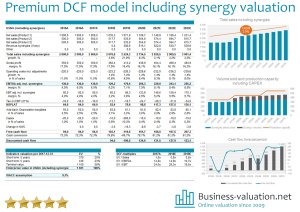
Private Equity models Start the discussion!

What is Private Equity?
Private equity is capital that is not noted public exchange. It is made up of funds that originate from different sources. These can originate from institutional investors or accredited investors, ranging from banks, investment institutions or high net worth individuals, whom provide substantial sums of money for extended periods of time. The aim ultimately being to acquire equity (money) ownership in companies.
A few examples of such firms are: Apollo Global Management, Bain Capital and Blackstone.
Why? The role of such firms is to use that capital to target and purchase established businesses using Private Equity Models, be it private companies or public companies, that will eventually become delisted from public stock exchanges under go-private deals. They then, hope to sell them at a profit in typically, a 4-7 year period.
For a visual representation of this process, have a look at Investopedia’s 2 minute video
How about Risk? Private equity firms are risk averse. The will make low-risk investments, such that the investors can receive a high, yet stable return. For that reason, they will choose firms with a likelihood of increasing share prices in the future, such that the Private Equity firm can make a profit on the investment.
Think of corporations like Burger King, LinkedIn and Taleo Corporation that Bain Capital invested in, and whose services and products are currently being used all over the world.
How do they help? Once the agreement is made, the private equity managers will work along with the management team of the firm to enhance the business’s performance. Many aspects can be targeted such as operation, efficiency savings, cash generation, supply chain management or improving marketing and sales. The result should be an increase in the value of the firm.
Fees? Private Equity firms charge a fee, that typically is composed of a management fee and a performance fee. These fees are first charged to the amount of capital that is raised, which gives an income to the PE firm. But when the business is sold, the firm makes even more income given the performance fee (or carried interest) charged on the profit made due to the rise in market value.
To put it in perspective, a large private equity firm like Apollo Global Management held $188.6 Billion of assets under management in 2016.
If you’d like to know more about fees and regulation done by Private Equity firms have a look at Investopedia's article
Where can I find Private Equity Valuation Excel Models?
For companies considering to analyse a company, specially its valuation, the Eloquens catalogue provides a variety of Private Equity valuation Excel models and templates designed by professionals where all you need is inputs. The Private Equity Excel Models calculate the rest for you. They can be a great source to learn and then build your own.
Most popular models
 Customizable and powerful template for carried interest calculations for private equity projects8,0473add_shopping_cart$49.00
Customizable and powerful template for carried interest calculations for private equity projects8,0473add_shopping_cart$49.00 by Alex Martyanov
by Alex Martyanov

Private Equity Fund Cashflows Model
PE Financial Model to analyze fund cashflows and returns available to LP and GP along with portfolio level cashflows.3,0478add_shopping_cart$120.00
 by Street Fox Advisors
by Street Fox Advisors

All in One Private Equity Model
Used by Investment Professionals at Private Equity and IB Firms14,3232add_shopping_cart$180.00 by John Swan
by John Swan

Synergy Valuation Premium DCF Excel Model
A Premium Discounted Cash Flow DCF Model including synergy valuation12,5603add_shopping_cart$49.00
 by Patrik Johansson
by Patrik Johansson

Private Equity Profit Distribution Waterfall Model
The model allows for the distribution of funds between the Limited Partners ('LPs') and the General Partner ('GP') for investment or private equity funds.415Discussadd_shopping_cart$50.00 by Jair Almeida
by Jair Almeida

P&L Due Diligence - Exhaustive Revenue Analysis model
Model for in depth understanding of high level P&L and Revenue Analysis. Big-4 like book of due diligence analyses.1,764Discussadd_shopping_cart$199.00 by HEURTEBIZE
by HEURTEBIZE








